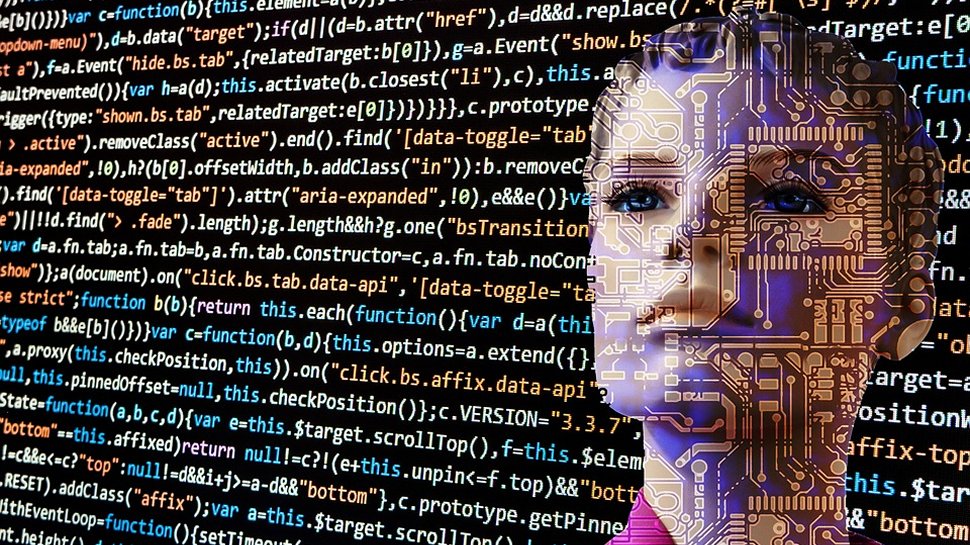How AI can help educators leap ahead
The future of AI in education

Remote learning is suddenly front and center as schools, parents and students transition from the classroom to online learning platforms.
Mitrankur Majumdar is Vice President and Regional Head—Services, Americas, Infosys
Everyone is going to be forced to get better at using e-learning tools, but is that enough by itself? Artificial intelligence (AI) can help with the challenges teachers are facing while trying to teach remotely – as well as when they get back into the classroom.
Accelerating online
As the world locks down and schools close, the internet is being flooded with school students and teachers. This is radically changing the makeup of the e-learning market, and an unintended knock-on effect will be a shift in the technology that is being developed to manage the specific needs of primary and secondary school children in the UK and across the globe.
Traditional remote learning relies on a self-motivated and self-interested adult learner, with the platforms and techniques being primarily designed for corporates and the higher-education market. Younger children have different needs, and access to inspiring teachers and content to keep them engaged is of paramount importance.
AI technologies can help to provide school age children with the online learning they need, bringing the best of both worlds together, resulting in significantly improved learner outcomes in the long-term.
The AI edge
Most teachers don’t have enough time in front of their students where they can focus on their specific needs. In fact, the majority of a teacher’s week is actually spent planning and preparing lessons, marking work and inputting and analyzing data rather than face to face teaching.
AI can help to free up this time to enable teachers to focus on the students and topics where their time is most needed and most valuable. It all starts with a Learning Profile that can be created through machine learning techniques to automatically review students’ submissions, interactions and performance. This insight can be used in multiple ways.
Are you a pro? Subscribe to our newsletter
Sign up to the TechRadar Pro newsletter to get all the top news, opinion, features and guidance your business needs to succeed!
Firstly, AI can use this insight to recommend specific learning content or pathways for individual pupils which will help students to fill in their own personal knowledge gaps. Each student’s learning plan can be tailored to their individual learning style, which may help them to progress at a faster pace compared to a large class environment with only one teacher.
Secondly, AI can also help once the learning content has been completed by pupils. There are now multiple companies that can leverage AI and data analytics to help teachers to mark work and provide useful feedback. One example is Bakpax, a US company which can auto-grade pupil’s work and give learners immediate feedback. Pupils simply take a picture of their finished assignment and submit. Teachers can then see how their classes are progressing and which areas they are struggling with more and need to revisit.
On a macro scale, this data and insight can also begin to inform education strategy. By tracking performance and continuously learning from its interactions with students, AI could be used to help update the national curriculum. It could also help to identify groups of students with special requirements for further public investment.
But perhaps even more exciting is that AI can help teachers to easily engage those children with English as a foreign language. Already, there is the potential for students to take a class from a teacher who speaks a different language to them by using a free plug-in for PowerPoint called Presentation Translator - it creates real time subtitles as the teacher speaks. This technology can also help students with hearing impairment and open a world of learning to students far beyond what is available at their particular school.
Taking the leap
While it might sound like science-fiction, all these technologies exist, and are being adopted by educators around the world. The global AI in education market is expected to reach $4 billion by 2024, growing at a 45% CAGR.
And yet there is no denying that transitioning to AI-supported teaching will be a big step for all involved. The key is to understand that this technology will not replace valuable human teachers, but augment and extend their capabilities in order to achieve more personalized outcomes for all students. Indeed, COVID-19 has provided a stronger business case for schools to invest in AI for education, and perhaps UK councils will begin working together more closely to share data and create solutions.
This period of unexpected closure and forced e-learning is an opportunity for schools to get comfortable with the new technology. And when students and teachers go back to school, they’re going to take many new digital tools and techniques back with them. These will form the foundations for a more digital education for future generations.
- We've featured the best laptops for school.
Mitrankur Majumdar is the Vice President and Regional Head—Services, Americas at Infosys.
Mitrankur is a passionate, innovative and strategic business leader with 23 years of experience specializing in executing business transformation through technology and process intervention. At Infosys, Mitrankur is responsible for positioning the company as a global systems integrator across Information services, Publishing, Professional services, Education, Travel, Hospitality and EPC companies. Apart from helping his customers with their IT or BPO landscape he is also passionate about helping his customers leverage robotic process automation to generate efficiency, artificial intelligence to solve complex business problems, benefit from the digital transformation, Big Data to get insights, complete their cloud transformation journey and much more. In his role as a Regional Head, Mitrankur is responsible for creating a strategy to generate profitable revenue from a set of industry sectors, executing the strategy with the help of a set of sales team, marketing team, delivery team and others.
